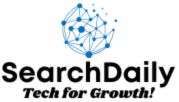City-based cities have been at the center of human development, growth, culture, and progress. With over half the world’s city dwellers, problems facing cities are congestion, resource management, and sustainable growth. This is the basis of “smart” cities”—urban environments that are designed to make life more efficient, easier, and sustainable by using the latest technology. The underlying idea is the Internet of Things (IoT), which is a system of interconnected devices that collect data, analyze it, and respond to it in real time. Through the integration of IoT into urban structures, smart cities are aiming to transform the way we live, work, and interact with urban spaces.
The Foundation of IoT in Smart Cities
The foundation for any city that is smarter than the rest of it lies in the utilization of IoT. It is a combination of embedded sensors, software, and connectivity that allows physical devices to connect to each other as well as with central systems. Through the collection of huge amounts of information, IoT supports decision-making processes that improve the efficiency of operations for urban planning. For example, smart grids powered by IoT modify the distribution of electricity in accordance with demand patterns, and smart water systems track consumption and identify leaks. IoT creates the foundation for smarter infrastructures, ensuring that cities can optimize their resources while also being eco-friendly.
Enhancing Urban Services with IoT
IoT could improve urban services and make them more efficient and accessible. Public transportation, for instance, can greatly benefit from IoT-powered services like GPS tracking and real-time arrival updates and pre-planned maintenance on vehicles. Waste management systems are able to monitor garbage levels in bins and optimize the routes for collection, which reduces operational costs and CO₂ emissions. Additionally, smart parking systems let motorists find parking spaces easily, which reduces unnecessary traffic. These examples demonstrate how IoT can improve basic city services, resulting in improved experiences for the citizens.
IoT and Public Safety
Public safety is among the most vital components of every city, and IoT is fast changing how urban areas deal with security concerns. IoT-powered surveillance systems are able to analyze real-time data from sensors, cameras, drones, and sensors to spot possible threats and notify authorities. Smart traffic lights are able to adjust in real-time to make emergency vehicles more prominent, which can reduce the time needed to respond to accidents or emergencies. Furthermore, environmental monitoring sensors placed throughout cities monitor conditions of the air and weather as well as radioactivity levels. They alert people and officials to health risks. Through further integration of IoT cities, they can be better prepared to deal with emergencies and protect their residents.
The Impact on Citizens’ Lives
Imagine living in a place where there is a reduction in energy consumption, waste is effectively managed, and public transportation is seamless. The incorporation of IoT in urban areas allows these benefits to be realized and directly impacts the people’s quality of life. From having a more efficient commute thanks to traffic management systems to reducing the energy used by households with sensors that are smart, IoT transforms daily life in numerous ways. Additionally, enhanced security for the public, easy access to healthcare alerts, and sustainable practices promote mental and physical well-being. People do not feel that they’re navigating the chaos of urban life; rather, they experience cities that are designed to meet the changing needs of their citizens.
Challenges and Considerations
While the promises of smart cities are tantalizing, challenges remain. One major concern is data privacy and cybersecurity. With IoT gathering colossal amounts of sensitive information, it becomes vulnerable to breaches and misuse. Governments and private enterprises must prioritize airtight cybersecurity measures to maintain public trust. Additionally, the integration of IoT technology often requires extensive infrastructural changes, which can be costly and time-intensive. The rollout of smart city initiatives may overlook marginalized communities, leading to issues of inequality. Any effort to create smart cities must be accompanied by a commitment to inclusivity and ethical practices.
Future Trends and Opportunities
The future of smart cities is as dynamic as it is exciting. Artificial intelligence (AI) will likely play a central role in refining IoT operations, analyzing data at unprecedented speeds to enable predictive decision-making. Autonomous mobility, such as self-driving vehicles, promises to make transportation safer and more efficient. Renewable energy solutions, integrated with IoT, will drive the transition toward sustainable urban areas that rely less on fossil fuels. Additionally, 5G technology is expected to act as a catalyst, enabling faster and more reliable communication between IoT devices. The fusion of these technologies points to a future where cities will not only meet the challenges of urbanization but thrive despite them.
Building Smarter Cities Together
Smart cities and IoT represent a significant shift in how urban environments function. By intertwining technology, sustainability, and human-centric design, smart cities aim to redefine the future of urban living. However, to unlock their full potential, collaboration between governments, businesses, tech innovators, and citizens is indispensable. Achieving this vision requires thoughtful planning, ethical practices, and a shared commitment to making cities better for the people who call them home. For those eager to be part of this transformation, the time to act and innovate is now.
FAQs
1. What is a smart city?
A smart city uses technology and data to enhance urban living by optimizing resources, improving infrastructure, and creating sustainable practices.
2. What role does IoT play in smart cities?
IoT serves as the foundation of smart cities by connecting devices and systems to collect, analyze, and act upon real-time data for better efficiency and decision-making.
3. What are the benefits of smart cities?
Smart cities improve quality of life through enhanced services like public safety, efficient transportation, reduced energy consumption, and sustainable resource management.
4. What challenges do smart cities face?
Major challenges include data privacy concerns, cybersecurity threats, high implementation costs, and ensuring that smart city benefits are inclusive for all communities.
5. What does the future hold for smart cities?
The future of smart cities includes advancements in AI, 5G, autonomous transportation, and renewable energy solutions to create more sustainable and efficient cities.



